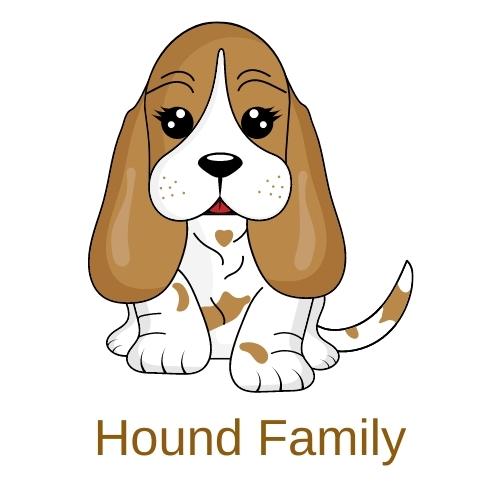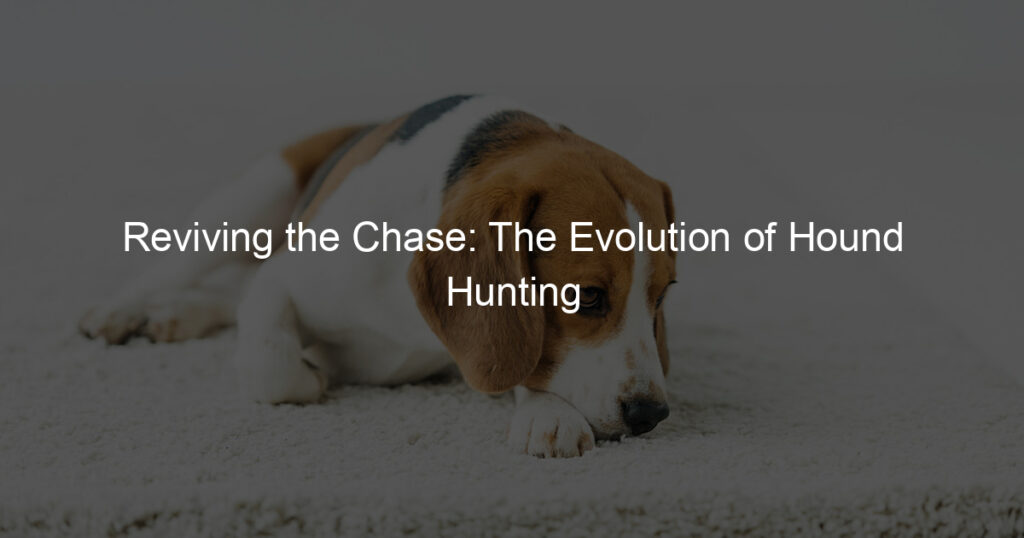Introduction: Unleashing the Truth About Hound Dog Size

When it comes to hound dogs, size matters. Whether you’re a dog lover, a potential pet owner, or a curious reader, understanding the size of hound dogs can be both fascinating and crucial. In this article, we will delve into the world of hound dogs and their sizes, shedding light on the facts and debunking the myths.
-
- Overview of Hound Dog Size
Hound dogs come in a wide array of sizes, from the petite Dachshund to the towering Irish Wolfhound. The size of a hound dog can significantly influence its behavior, health, and even lifespan. For instance, smaller hound dogs tend to be more energetic and live longer, while larger breeds are often more laid-back but may face more health issues. According to Wikipedia, the average weight of a hound dog can range from 10 to 150 pounds, and their height can vary from 8 to 34 inches at the shoulder.
-
- Importance of Understanding Hound Dog Size
Understanding the size of a hound dog is essential for several reasons. Firstly, it helps potential pet owners choose the right breed that fits their lifestyle and living conditions. For instance, larger hound dogs may not be suitable for apartment living due to their need for more space. Secondly, knowing the size of your hound dog can help you provide the right care, including diet, exercise, and health check-ups. Lastly, it can help you understand and predict your dog’s behavior better, leading to a more harmonious relationship.
So, let’s embark on this journey to understand the size of hound dogs better. Whether you’re a dog enthusiast or just a curious reader, we promise you’ll find this guide informative and engaging.
Hound Dog Growth Chart: A Comprehensive Guide
Understanding the growth pattern of your hound dog is crucial in ensuring they develop properly and maintain a healthy weight. This guide will help you interpret the Hound Dog Growth Chart and highlight the key takeaways you should be aware of.
Understanding the Hound Dog Growth Chart
The Hound Dog Growth Chart is a tool that helps you track your dog’s growth over time. It’s essential to understand this chart as it provides valuable insights into your hound’s health and development.
-
- Interpreting the Hound Dog Growth Chart
The chart is divided into weeks or months, depending on the age of your hound. The vertical axis represents the weight, while the horizontal axis represents the age. By following your hound’s growth line, you can see if they are growing at a healthy rate. If the line deviates significantly from the average, it might be a sign that your hound is underweight or overweight, and you should consult a vet.
-
- Key Takeaways from the Hound Dog Growth Chart
The most important thing to remember is that each hound is unique and may not follow the average growth pattern exactly. Factors such as diet, exercise, and genetics can influence growth. However, if your hound’s weight is consistently above or below the average range, it’s worth discussing with your vet. Remember, maintaining a healthy weight is crucial for your hound’s overall health and longevity.
Case Study: Hound Dog Growth Chart in Action
-
- Case Study Introduction
Our case study focuses on a specific Hound Dog named Max. Max’s growth pattern was meticulously tracked from his puppy stage to adulthood. This real-life example will help us understand the Hound Dog growth chart better.
-
- Findings
Max, like most Hound Dogs, showed a rapid growth spurt in his first six months. He weighed around 2 pounds at birth and grew to 35 pounds by the time he was six months old. This aligns with the typical growth pattern observed in the Hound Dog growth chart. Max’s weight gain slowed down after the first year, and he reached his adult weight of 65 pounds at around 18 months. This is consistent with the fact that Hound Dogs typically reach their adult weight between 12 to 24 months.
| Age | Weight |
|---|---|
| Birth | 2 pounds |
| 6 months | 35 pounds |
| 18 months | 65 pounds |
It’s important to note that while Max’s growth pattern aligns with the typical Hound Dog growth chart, individual growth can vary based on factors like diet, exercise, and health conditions. Always consult with a vet for the best care for your Hound Dog.
-
- Conclusion
Our case study with Max demonstrates the practical application of the Hound Dog growth chart. It provides a clear picture of what dog owners can expect in terms of growth and development. However, remember that each dog is unique and may not strictly adhere to the chart. Regular vet check-ups and a balanced diet are essential for your dog’s healthy growth.
Decoding Hound Dog Weight: From Puppy to Adult
Understanding the growth pattern of your Hound dog is crucial to ensure their health and happiness. Let’s delve into the specifics of Hound dog puppy growth and what you can expect.
Hound Dog Puppy Growth: What to Expect
As a dog owner, watching your Hound puppy grow can be one of the most rewarding experiences. However, it’s essential to understand what to expect during this growth phase to ensure your pup is developing healthily.
-
- Typical Hound Dog Puppy Weight
Generally, a Hound puppy will weigh between 1.5 to 2.5 pounds at birth. By the time they reach six months, they can weigh anywhere from 40 to 60 pounds, depending on their gender and specific breed. It’s important to note that these are average figures and individual dogs may vary.
-
- Factors Influencing Hound Dog Puppy Growth
Several factors can influence the growth of your Hound puppy. Nutrition plays a significant role, with a balanced diet being crucial for healthy growth. Genetics also play a part, as larger breeds tend to grow faster than smaller ones. Other factors include the puppy’s activity level and overall health status. Regular vet check-ups can help monitor your puppy’s growth and detect any potential issues early.
By understanding your Hound puppy’s growth, you can better cater to their needs and ensure they grow into a healthy and happy adult dog. Remember, every dog is unique, and what’s most important is that they are loved and cared for.
Adult Hound Dog Size: The Final Verdict
As a dog lover, you may be curious about the size of an adult hound dog. This information is crucial for understanding the needs of your pet and ensuring they have a comfortable and happy life. Let’s delve into the details.
-
- Average Size of Adult Hound Dog
The average size of an adult hound dog can vary greatly due to the diversity of the hound group. Generally, hound dogs can range from medium to large sizes. For instance, the Basset Hound, a popular breed within the hound group, typically weighs between 50-65 pounds and stands about 14 inches tall at the shoulder. On the other hand, the Afghan Hound, another hound breed, can weigh anywhere from 50 to 60 pounds and stand as tall as 27 inches at the shoulder. It’s important to note that these are averages and individual dogs may vary.
-
- Factors Influencing Adult Hound Dog Size
Several factors can influence the size of an adult hound dog. These include:
-
- Genetics: The breed of the hound dog plays a significant role in determining its size. Different breeds within the hound group have different average sizes.
- Nutrition: The quality and quantity of food a hound dog consumes during its growth stages can impact its adult size. A balanced diet is crucial for optimal growth.
- Exercise: Regular physical activity is essential for a hound dog’s growth and development. Exercise helps to maintain a healthy weight and build muscle mass.
- Health: Certain health conditions can affect a hound dog’s growth and development, potentially impacting its adult size.
In conclusion, while there is a general range for the size of adult hound dogs, individual sizes can vary based on various factors. It’s always best to consult with a veterinarian for the most accurate information about your hound dog’s size and growth.
Hound Dog Breed Size: A Comparison
Understanding the size of different hound dog breeds is crucial for potential dog owners. This comparison will provide a clear picture of the size differences among various hound dog breeds.
Hound Dog Size Comparison: Breed by Breed
-
- Comparison Introduction
Size is a significant factor when choosing a dog breed. It influences the dog’s living conditions, diet, and exercise requirements. In this section, we will compare the sizes of different hound dog breeds.
-
- Comparison of Different Hound Dog Breeds
| Breed | Height (inches) | Weight (pounds) |
|---|---|---|
| Beagle | 13-15 | 20-25 |
| Basset Hound | 14 | 50-65 |
| Dachshund | 8-9 | 16-32 |
| Greyhound | 27-30 | 60-70 |
As you can see, there is a wide range of sizes among hound dog breeds. For instance, a Dachshund is significantly smaller than a Greyhound. Therefore, it’s essential to consider the size of the breed when choosing a hound dog.
-
- Conclusion
In conclusion, hound dog breeds come in various sizes, each with its unique requirements and characteristics. Whether you prefer a small, medium, or large breed, there’s a hound dog that will perfectly fit your lifestyle. Remember, the size of the dog can significantly impact its health, behavior, and overall well-being, so choose wisely.
Hound Dog Height: An Important Measure
When it comes to understanding the physical attributes of hound dogs, height is a crucial factor. It’s not just about how tall your dog will grow, but it also has implications on their health, lifestyle, and even their personality. In this section, we will delve into the significance of a hound dog’s height and provide you with the average height you can expect from this breed.
-
- Why Hound Dog Height Matters
Height is an essential aspect of a hound dog’s overall size. It can significantly influence their health and quality of life. For instance, taller dogs may be more prone to certain health issues like joint problems. They also require more space to move around comfortably and may need more exercise to maintain a healthy weight. Understanding your hound dog’s potential height can help you prepare for their needs and provide them with the best care possible.
-
- Average Hound Dog Height
While there can be variations depending on the specific breed and individual genetics, the average height for a hound dog ranges from 20 to 27 inches at the shoulder. This measurement is taken from the ground to the highest point of the dog’s shoulder blades when the dog is standing on all fours. It’s important to note that this is a general range, and your hound dog may fall slightly below or above these averages.
Remember, every hound dog is unique, and their height can be influenced by various factors, including their diet, exercise, and overall health. Always consult with your vet if you have concerns about your hound dog’s growth or size.
Hound Dog Growth Stages: A Timeline
Understanding the growth stages of a hound dog is crucial for every dog owner. It helps you to provide the right care and nutrition at each stage, ensuring your hound dog grows into a healthy and happy adult. Let’s take a closer look at these stages and what you can expect at each one.
Understanding Hound Dog Growth Stages
There are four main stages in the growth of a hound dog: the neonatal stage, the transitional stage, the socialization stage, and the juvenile stage. Each stage has its own unique characteristics and developmental milestones.
-
- Stages of Hound Dog Growth
The neonatal stage lasts from birth to two weeks. During this stage, puppies are completely dependent on their mother for warmth and nutrition. The transitional stage occurs between two and four weeks. Puppies begin to open their eyes, develop their senses, and start to walk. The socialization stage happens between four and twelve weeks. This is a critical period for puppies to learn about their environment and socialize with other dogs and humans. Finally, the juvenile stage lasts from twelve weeks to maturity. During this stage, puppies continue to grow and develop physically, and they begin to learn and understand commands.
-
- What to Expect at Each Stage
During the neonatal stage, expect your puppy to sleep most of the time and feed every two hours. In the transitional stage, you’ll notice your puppy becoming more active and starting to explore their surroundings. The socialization stage is a time of rapid learning, and it’s important to expose your puppy to a variety of experiences during this time. In the juvenile stage, your puppy will have a lot of energy and curiosity, so it’s a good time to start basic training and socialization.
Understanding these stages and what to expect can help you provide the best care for your hound dog as they grow and develop. Remember, every dog is unique and may develop at a slightly different pace, so it’s important to be patient and supportive during each stage of growth.
Conclusion: The Truth About Hound Dog Size
In this comprehensive guide, we have delved into the fascinating world of hound dog sizes, exploring their growth charts, weight fluctuations, breed size comparisons, height measurements, and growth stages. Let’s recap the key points and share some final thoughts on hound dog size.
-
- Recap of Key Points
Our journey began with an introduction that unveiled the truth about hound dog sizes, setting the stage for a deeper understanding. We then navigated through the hound dog growth chart, a tool that provides a clear picture of a hound dog’s growth trajectory from puppyhood to adulthood.
We also decoded the weight of hound dogs, highlighting the variations from puppyhood to adulthood. A comparison of hound dog breed sizes gave us a broader perspective on how different breeds within the hound family can vary in size. We also discussed the importance of height in hound dogs, a measure that can significantly impact a dog’s health and lifestyle.
Finally, we walked through the different growth stages of a hound dog, providing a timeline that helps dog owners understand and anticipate the changes their hound dogs will undergo as they grow.
-
- Final Thoughts on Hound Dog Size
Understanding the size of a hound dog is crucial for any dog owner. It not only helps in providing the right care and nutrition but also aids in creating a conducive environment for the dog’s growth and development. The size of a hound dog can vary greatly based on the breed, and each breed has its unique characteristics and requirements.
It’s important to remember that while size can give us a general idea of what to expect in terms of care and lifestyle needs, every hound dog is unique. Their personality, temperament, and individual health considerations should always be taken into account when making decisions about their care.
As we conclude, remember that the love, care, and commitment you show towards your hound dog are what truly matter. Size doesn’t define your pet; it’s the bond you share and the memories you create together that count.








